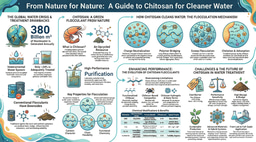The comprehensive SARS-CoV-2 ‘hijackome’ knowledge base
Published in Microbiology and Protocols & Methods

Explore the Research

The comprehensive SARS-CoV-2 ‘hijackome’ knowledge base - Cell Discovery
Cell Discovery - The comprehensive SARS-CoV-2 ‘hijackome’ knowledge base
With the emergence of COVID-19, the severe acute respiratory syndrome coronavirus 2 (SARS-CoV-2) has continuously evolved, giving rise to multiple Variants of Concern (VOCs). These include Alpha, Beta, Delta, and Omicron (subvariants BA.1 and BA.5), each displaying distinct characteristics that influence infection dynamics, immune evasion, and pathogenicity. Our recent study (cite here) sheds light on how these variants manipulate host cellular processes, revealing new therapeutic targets to disrupt this viral hijacking. By using multi-omics analyses, we explored variant-specific changes in host cells, identifying critical differences in infection timelines and uncovering key pathways leveraged by SARS-CoV-2 variants to propagate.
Research Approach and Methods
We employed a combination of phosphoproteomics and BioID-MS to chart the interactions between various SARS-CoV-2 VOCs and host cells. VeroE6-H10 cells were infected with Finland-derived Alpha, Beta, Delta, and Omicron (BA.1 and BA.5) viruses, then sampled at multiple time points (1 to 36 hours post-infection). Phosphoproteomics revealed shifts in host signaling through changes in phosphorylation events, while BioID-MS identified variant-induced alterations in protein-protein interactions. This approach allowed us to map variant-specific host responses and understand how particular mutations influence host cell signaling cascades.
Key Findings
-
Distinct Infection Dynamics Across Variants
Each variant exhibited unique infection kinetics. Alpha and Delta variants showed rapid viral protein expression, while Omicron BA.1 and BA.5 lagged behind at early time points. Interestingly, by 36 hours, Omicron variants reached similar levels of viral protein expression to Alpha, Beta, and Delta. This delayed progression may be a strategic adaptation, enabling Omicron to evade early immune responses and potentially explain differences in transmissibility and immune escape. -
Manipulation of the RHO GTPase Pathway
All VOCs engaged the RHO GTPase signaling network, essential for cytoskeletal organization and cellular trafficking. By fine-tuning this pathway, SARS-CoV-2 variants enhance viral entry, replication, and release. Mutations in Alpha and Delta, for example, more strongly activated cytoskeletal remodeling, improving viral dissemination. Similarly, Omicron variants demonstrated evolutionary refinements to more effectively exploit this key host pathway. -
Exploitation of the ERAD Pathway
The endoplasmic reticulum-associated degradation (ERAD) pathway, crucial for handling misfolded proteins, was notably co-opted by Beta and Omicron BA.1 variants. This hijacking likely induces cellular stress that benefits viral replication. By pushing the host ERAD machinery into overdrive, these variants may suppress immune defenses and redirect cellular resources toward viral protein synthesis, aiding in immune evasion and promoting efficient replication. -
Phosphoproteomics and Host Signaling
Our phosphoproteomic analysis revealed that VOCs systematically modulate host phosphorylation events, influencing pathways tied to RNA processing and stress responses. For instance, Alpha and Delta variants upregulated phosphorylation sites involved in mRNA splicing, potentially diverting host resources toward viral RNA processing. Such fine-tuned manipulation underscores SARS-CoV-2’s capacity to adapt host machinery for its own advantage.
Implications for Therapeutic Interventions
This comprehensive exploration identified 1,474 potential drug targets within the SARS-CoV-2 “hijackome”—the network of virus-host interactions. Of these, 1,126 presented highly druggable deep binding pockets suitable for small-molecule intervention. Additionally, 680 targets featured protein-protein interaction sites that could be modulated by small molecules, offering a promising but challenging route for antiviral therapy development. More than 500 of these targets displayed highly druggable PPI sites, highlighting the potential for innovative therapeutic strategies aimed at cutting off the virus’s access to critical host pathways.
Conclusion
Our study provides a detailed atlas of how SARS-CoV-2 VOCs manipulate host cellular networks, including signaling and degradation pathways, to ensure their survival and proliferation. The multi-omics approach not only deepens our understanding of SARS-CoV-2 pathogenesis but also identifies a broad array of therapeutic targets. As the virus continues to evolve, insights from this research could guide the development of antiviral treatments that remain effective against emerging variants.
By sharing this resource, we aim to support ongoing and future research efforts. Our multi-omics knowledge base can serve as a critical foundation for novel antiviral therapies that disrupt key host-pathogen interactions. Through targeted interventions that dismantle SARS-CoV-2’s capacity to hijack host cells, we can work toward durable strategies to mitigate this persistent global health threat.
Follow the Topic
-
Cell Discovery

This journal aims to provide an open access platform for scientists to publish their outstanding original works and publishes results of high significance and broad interest in all areas of molecular and cell biology.


Please sign in or register for FREE
If you are a registered user on Research Communities by Springer Nature, please sign in